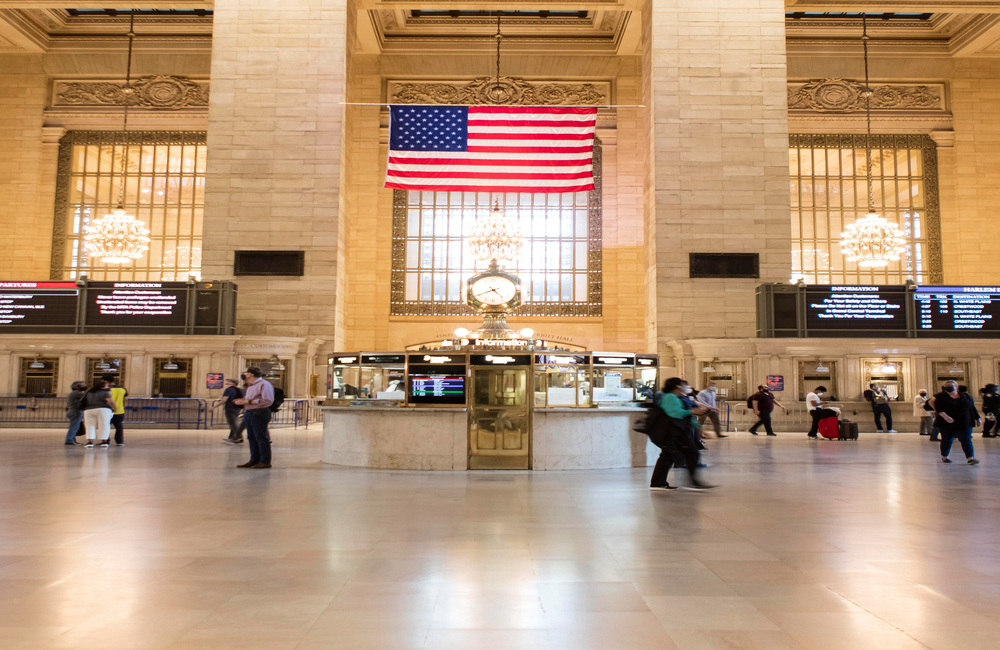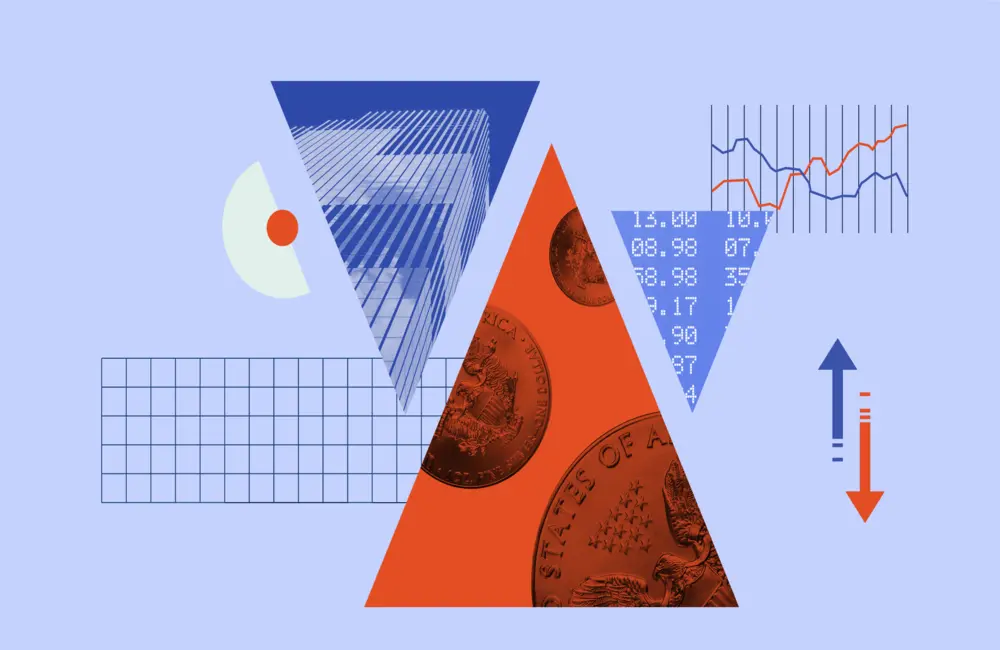Overseas, the Dow Jones Industrial Average jumped 2.7%. The S&P 500 rose 3.1 percent, for its largest one-day increase in percentage terms in more than two years. The tech-heavy Nasdaq composite gained 3.3%. All three indexes made up for losses from last week.
Stocks had fallen earlier this month on worries that the Fed might shove the economy into a recession as it tightens monetary policy to tame inflation. Market indexes bounced back this week as bargain-hunters swooped in to scoop up cheap stocks and in a paradoxical twist-in-the-tale where bad news became good news some worse-than-expected economic figures cranked up investors’ hopes that the Fed might turn less hawkish.
“You can see economic activity is cooling, that should cool inflation. That combining is quite positive,” said Luc Filip, head of investments at SYZ Private Banking.
The University of Michigan’s index of consumer sentiment fell to the lowest level it has recorded in a survey, according to data released on Friday. The drop underscored the sour mood among Americans as inflation erodes their purchasing power and recession fears stalk the economy.
The university also lowered its reading of inflation expectations in May over the next five to 10 years, reducing them to 3.1% from 3.3%. The revision gave some hope that the Fed wouldn’t be as aggressive about raising interest rates, analysts said.
At home, the S&P/ASX 200 gained 0.8% to 6578.7, writing back-to-back daily gains for the first time in nearly a month. Soaring technology shares enabled the benchmark index to shrug off weakness in commodities companies and complete a weekly gain of 1.6%.
Beaten-down consumer discretionary stocks were among the top gainers, with IDP Education, ARB and City Chic surging between 6.9% and 8.8%.
The heavyweight financial sector climbed 0.1%, while materials faded 0.1% lower and energy fell 1.45%.
In commodity markets, Brent crude oil dipped 0.8% to US$112.16 a barrel. Iron ore fell 0.9% to US$115. Gold futures rose 0.4% to US$1838.20.
This continued to lift local bond markets with the yield on Australian 2 Year government bonds falling to 2.75% and the 10 Year falling to 3.71%. Overseas, the markets moved the other way with the yield on 2 year US Treasury notes advancing to 3.06% and the yield on the 10 year US Treasury notes advancing to 3.13%.
The Australian dollar climbed to 69.41 US cents from 68.91 at the last close. The Wall Street Journal Dollar Index, which measures the US dollar against 16 other currencies, ticked down to 96.91.
Asia
Chinese shares finished in positive territory, buoyed by broad-based gains, following overnight gains on Wall Street. Also lifting equities were falling yields on US Treasurys due to recession fears, Oanda senior market analyst Jeffrey Halley said in a note. The Shanghai Composite Index closed up 0.9% at 3349.75, the Shenzhen Composite Index higher by 1.3% at 2192.66 and the ChiNext Price Index better by 2.3% at 2824.44. Sectors such as liquor-makers, renewable-energy companies and airlines ended up. Kweichow Moutai added 2.7% while Wuliangye Yibin climbed 2.5%, Arctech Solar was up 7.1% and Air China added 0.8%.
Hong Kong stocks ticked up, with the benchmark Hang Seng Index gaining 2.1% to 21719.06, after advances in Wall Street overnight. Hints from Chinese President Xi Jinping of a boulder stimulus to come as well as a potential reopening of Hong Kong’s border also continue to underpin investor sentiment, SPI Asset Management managing partner Stephen Innes says in a note. Leading the gainers were Wuxi Biologics, whose shares soared 10%, Sunny Optical Technology, which rose 8.6%, and Budweiser Brewing, up 6.9%. The technology sector also rose, with the Hang Seng Tech Index climbing 4.1% to 4844.58.
Japan’s Nikkei Stock Average added to early gains to end 1.2% higher at 26491.97. Sentiment was also supported by overnight gains in US equities after Fed Chairman Powell delivered his second day of testimony to lawmakers. Inflation is likely to stay in focus for investors; the overall consumer prices in Japan, which rose 2.5% in May, were higher than the BOJ’s 2% target for a second month in a row. Shipping stocks were higher, with Nippon Yusen up 2.0% and Mitsui O.S.K. Lines up 3.9%. Automaker Toyota ended 0.7% down after it recalled its new battery-powered sport-utility vehicles because of a potential safety risk.
Europe
European markets climbed as bond yields sank, however airline and auto stocks dipped. The pan-European Stoxx Europe 600 rose 2.6 percent, the French CAC 40 climbed 3.2 percent and the German DAX increased 1.6 percent. Other shares related to air travel including Deutsche Lufthansa, TUI and easyJet are among the biggest pan-European fallers as the sector deals with issues such as staff shortages, flight delays and cancellations, and strike action.
“After three weekly losses on the trot, US markets have opened higher as lower yields on the week have helped some of the more oversold parts of the market find a bid,” Michael Hewson, analyst at CMC Markets, said in a note.
FTSE 100 in London closed up 2.7% on Friday, helped by strong sessions for both US and Asian markets on the back of consumer confidence and retail sales figures.
Hikma Pharmaceuticals was the session's biggest riser, up 5.9%, followed by Ashtead Group and Croda International, both up 5.7%. The biggest fallers were Centrica, Rolls-Royce and Aveva Group, which dropped 2.1%, 1.1% and 0.4%, respectively.
North America
Stocks climbed Friday after new economic data eased investors’ expectations for steep interest-rate increases by the Federal Reserve, with the major market indexes logging their first weekly gain in three weeks.
The Dow Jones Industrial Average rose 2.7%. The S&P 500 rose 3.1 percent, the biggest one-day gain for the index in terms of percentage in more than two years. The tech-heavy Nasdaq Composite rose 3.3%.
Indexes have rebounded after the S&P 500 plummeted last week into a bear market, defined as a 20 percent decline from a recent high. The broader market index ended the week with a gain of 6.4 percent, but it remains down about 18 percent from its last record closing in January. The Dow industrials rose 5.4% for the week; the Nasdaq climbed 7.5%. All three indexes made back ground loss last week.
Earlier this month, stocks tumbled with fears that the Fed lashed it to a recession with a tightening of monetary policy as the central bank tries to temper inflation. Market indexes rose this week as bargain-hunters stepped in to scoop up beaten-down shares and in a counterintuitive twist in which bad news was good news some weaker-than-expected economic data increased investors’ hopes that the Fed might soon become less hawkish.
“The evidence is pretty clear that economic activity is cooling, and that should be cooling inflation.” And that together is quite a positive,” Luc Filip, head of investments at SYZ Private Banking, told us.
The University of Michigan’s index of consumer sentiment fell to its lowest-ever recorded level in June, survey data showed on Friday. The decline underscored the bleak sentiment pervading Americans as inflation erodes their purchasing power and recession risks swirl.
The university also downgraded its reading in May of inflation expectations for the next five to 10 years, to 3.1% from 3.3%. The revision spurred some optimism that the Fed might not be giving as much of a signal it will push through more interest-rate hikes, analysts said, adding to market gains that followed the release of the report at 10 am New York time. Jerome Powell, the Fed chairman, had referenced the survey’s May reading on long-run inflation expectations to help explain a 0.75 percentage point rate increase last week.
Earlier on Thursday, the US composite purchasing managers index, which tracks activity in both manufacturing and services, dropped to a five-month low.
Data from interest-rate derivatives markets indicate traders believe the Fed may be cutting rates as soon as the second half of next year. “Growth is coming down, maybe sooner than thought. That should give the Fed some room to ease at some point,” said Esty Dwek, chief investment officer at FlowBank.
Matt Stucky, the senior portfolio manager at Northwestern Mutual Wealth Management, cautioned that the rebound this week does not mean the market has bottomed. The Fed needs more of a signal that it is making progress against inflation before it finishes taking a step back on interest-rate increases, he added.
“My view is that financial conditions are going to be tighter, not looser, going forward,” Mr. Stucky said. “And with a couple of encouraging data points over the course of this week, that’s simply not going to be enough for the Fed to say, ‘All right, we’re just going to back off and see what happens next.’ "
All 11 sectors of the S&P 500 closed in the green Friday, with materials, financials, technology and consumer-discretionary stocks among the best-performing groups. Bank stocks were buoyed by the Fed’s annual stress tests, released late Thursday, which cleared the country’s largest lenders. Wells Fargo shares jumped $2.86, or 7.5 percent, to $40.76 on Friday, while Goldman Sachs gained $16.58 a share, or 5.8 percent, to $302.75.
Other stocks were also on the move, including the software company Zendesk, which jumped $16.22 a share, or 28 percent, to $74.17 after it said it was being bought by a group of investors, including Permira and Helman & Friedman, for $10.2 billion. FedEx stock jumped $16.26, or 7.2%, to $243.24 after it said revenue grew thanks to higher shipping rates and fuel surcharges.
Carnival shares surged $1.20, or 12 percent, to $10.85 after the cruise-line operator said it was on course for a nearly 50 percent rise in quarterly revenue compared with the first three months of the year. Its rivals surged as well, with Norwegian Cruise Line Holdings and Royal Caribbean both notching double-digit increases.
LendingTree shares fell $4.32, or 7.9 percent, to $50.55 after the online financial marketplace reduced its earnings forecast for the current quarter, saying that higher interest rates had hurt demand for home loans.
And Friday marked the close of heavy volumes over trading as index provider FTSE Russell rebalance its stock benchmarks, an annual event during which it adds and removes companies from indexes linked to trillions of dollars of investments. Passive fund managers who follow those indexes typically buy or sell those stocks at around 4 pm New York time on the day of the so-called Russell rebalance, to ensure their funds track their benchmarks correctly. Some 2.3 billion shares were traded, worth $79.3 billion, during the closing auction which determines official end-of-day prices for New York-listed stocks, making it the fourth-largest close on record at the NYSE, according to the New York Stock Exchange.
Oil prices advanced, with futures on benchmark Brent crude up 2.8 percent, settling at $113.12 a barrel. Even so, they’re nearly 8% lower this month.
The recent fall in commodity prices is a positive sign, Ms. Dwek at FlowBank said. “That would be exactly what the Fed would want to see, because commodities are one of the drivers of why inflation is so high,” she said.
The yield on the benchmark 10-year Treasury note rose to 3.125 percent from 3.068 percent on Thursday. Bond yields go up when prices go down.























